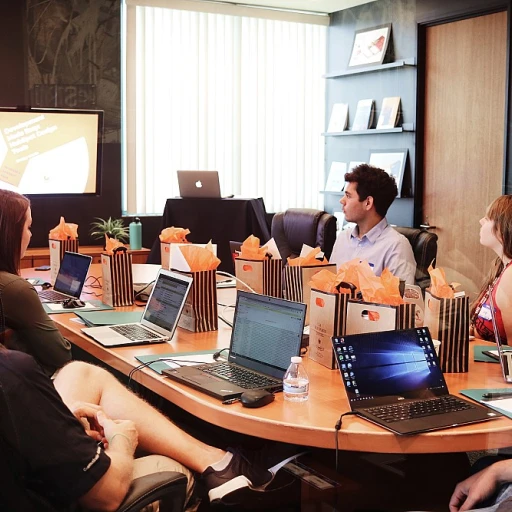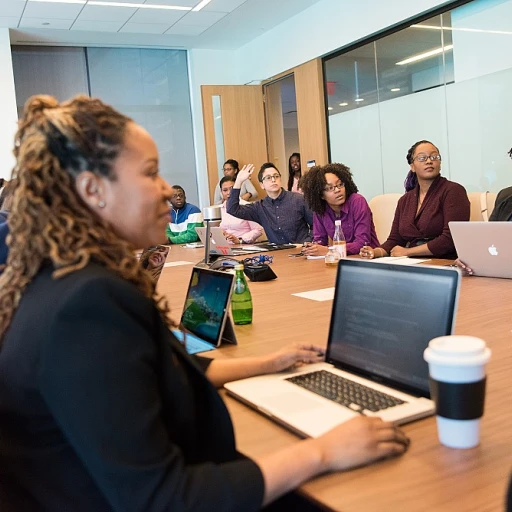How Virtual Reality is Changing the Way We Work
Revolutionizing Workplace Dynamics with Virtual Reality
Virtual reality (VR) is redefining the landscape of professional environments, creating an immersive realm that transcends traditional work settings. As organizations worldwide recognize the profound impact of VR, they are eager to integrate this technology into their operational frameworks. This shift is driven by the ability of VR to enhance productivity, creativity, and collaboration in ways previously unimaginable.
One of the primary ways VR is transforming work is by offering a new medium for meetings and collaboration. Imagine attending a team meeting where participants are present as avatars in a virtual conference room, allowing for more natural interactions than a standard video call. This innovative approach can lead to increased engagement and improved communication among team members, no matter where they are physically located.
Furthermore, VR enables the creation of dynamic and adaptable workspaces tailored to the specific needs of each task or project. This flexibility allows employees to customize their environment to optimize focus, comfort, and creativity, breaking free from the constraints of physical office spaces.
Additionally, virtual reality is paving the way for a more inclusive workforce by eliminating geographic barriers. Employers can tap into a global talent pool, leveraging diversity and different perspectives without the logistical challenges of relocation.
As we delve further into the impact of VR on the workforce, it becomes evident that it's not just about changing how we work but also about empowering employees with new tools for growth and development. This technological shift is just the beginning of an exciting new era for workplace innovation.
Virtual Reality Training: A New Era for Employee Development
Revolutionizing Employee Development: A New Age of Training
Virtual reality (VR) is ushering in a groundbreaking transformation in the realm of employee training and development. As businesses increasingly aim for more interactive and engaging methods to equip their teams, VR emerges as a powerful tool to meet this need. What makes VR particularly compelling is its ability to simulate real-world scenarios, allowing employees to practice skills and make decisions in a risk-free environment.
Incorporating VR into training programs enhances learning retention and boosts employee confidence. With the ability to create customized simulations, employees can experience hands-on learning situations tailored to specific job requirements or industry standards. For instance, in high-stakes sectors like healthcare and aviation, VR can replicate emergency situations, providing trainees with the opportunity to practice crucial decision-making without real-world consequences.
Furthermore, VR training offers unparalleled scalability. Global enterprises can deliver consistent training experiences across locations, ensuring that every employee receives the same quality of instruction. Companies that have adopted VR are witnessing increased engagement, where employees are no longer passive recipients of information but active participants in their learning journey.
In fostering a proactive learning culture, VR not only improves individual skill sets but also contributes to a more adaptable and innovative workforce. As businesses explore real-life applications of VR technology, its potential to reshape employee development strategies becomes increasingly evident. This revolution in training marks a fundamental shift in how companies prepare their workforce, inviting more personalized and efficient learning experiences that align with modern-day professional demands.
{
"result": "
Choosing the Right Virtual Reality Equipment for Your Office
\n\nNavigating the world of virtual reality (VR) for work can seem daunting at first, with an array of headsets and software options available. However, selecting the right equipment is crucial for leveraging the full potential of VR in transforming the workplace, as discussed in earlier sections.\n\nWhen considering a VR headset, it's essential to assess both compatibility and comfort. An optimal choice should be capable of running the specific VR applications relevant to your industry while ensuring user comfort for extended use. Options range from high-end headsets like the Oculus Rift and HTC Vive, which provide integrated support for complex business applications, to more budget-friendly alternatives like the Oculus Quest, which offers a balance between performance and ease of use.\n\nEqually important is selecting the appropriate VR software that aligns with your business objectives. Industry-specific solutions can range from immersive training modules, as highlighted in our discussion on employee development, to more generalized platforms designed for collaborative purposes, improving team communication and productivity in a remote work setting.\n\nTo understand how digital transformation is shaping modern workplaces and how VR fits into this larger picture, you can learn more through reliable sources that explore
the impact of digital transformation.\n\nIncorporating VR into your business model doesn't just stop at purchasing the right hardware and software; it involves continuous evaluation and updates to stay ahead in the rapidly evolving tech landscape. Adopting these tools will set the foundation for a more innovative and adaptable work environment."
}
The Role of Virtual Reality in Enhancing Mental Health at Work
Boosting Workplace Well-Being with Virtual Reality
In today's fast-paced work environment, maintaining mental health is more important than ever. Virtual reality (VR) is emerging as a powerful tool for enhancing mental well-being in the workplace. By integrating VR into daily routines, companies can offer immersive experiences that promote relaxation, stress reduction, and overall mental health.
One innovative approach is using VR for mindfulness and meditation sessions. Employees can transport themselves to serene environments, such as a tranquil beach or peaceful forest, providing a much-needed escape from the stresses of work. This immersive experience not only helps in calming the mind but also enhances focus and productivity upon returning to work tasks.
VR can also simulate scenarios for cognitive behavioral therapy (CBT), offering personalized sessions tailored to individual needs without leaving the office. This accessibility makes mental health support more inclusive and reduces the stigma often associated with seeking help.
Moreover, virtual reality can foster a sense of community and connection within remote teams. By creating shared VR experiences, employees can engage in virtual team-building activities and social events, which help in combating loneliness and promoting a sense of belonging.
As companies continue to explore various ways of incorporating VR into the workplace, they not only improve the mental well-being of their employees but also demonstrate commitment to a holistic approach to workforce health. By championing VR for mental health support, businesses are paving the way for a more productive and happier future workplace.
Real-Life Applications of Virtual Reality in Business
Implementing Virtual Reality Across Various Industries
Virtual reality (VR) is becoming increasingly integral to a wide range of industries, offering unique and immersive solutions that drive both innovation and efficiency. Not only does it reshape traditional business operations, but it also opens up new possibilities that previous technologies couldn't address.
In the healthcare sector, for instance, VR is used extensively for surgical training and patient treatment. Medical professionals leverage VR simulations to practice complex procedures in a risk-free setting, enhancing their skills without the implications of real-world errors. Similarly, patients benefit from VR therapies, such as pain management and mental health support, where immersive environments play a crucial role in their recovery journeys.
Meanwhile, in the world of retail, VR is transforming the shopping experience. Retailers are designing virtual stores that allow customers to explore and purchase products from the comfort of their homes. This not only expands their market reach but also provides personalized shopping experiences that can adapt to individual preferences and behaviors.
The real estate industry is also tapping into VR's potential by offering virtual property tours. Prospective buyers can explore listings remotely, which saves time and costs associated with physical visits. These virtual tours also give a better sense of scale, layout, and design, providing buyers with a more comprehensive understanding of the property.
In manufacturing and design, VR supports product development processes by enabling designers and engineers to create and visualize prototypes in 3D. This accelerates the design cycle, reduces material waste, and can lead to more innovative outcomes by visualizing ideas that would be hard to convey through traditional 2D drawings.
By integrating VR into their offerings, businesses can achieve remarkable advancements, while employees find themselves equipped with better tools to fulfill their roles. The potential applications of VR across industries underscore its transformative power and a promising outlook as companies increasingly prioritize virtual solutions in their digital strategies.
The Future of Virtual Reality in the Workplace
Virtual Reality's Expanding Role in Tomorrow's Office
As we look to the future, the potential for virtual reality (VR) within the workplace seems boundless. Technologies that once seemed fit for gaming and entertainment are evolving into essential business tools, seamlessly integrating into our daily office routines.
The groundwork laid by VR in transforming how we work is evident in its application across various areas such as employee training and mental health support. Companies that have embraced VR for training have found value in its ability to simulate realistic scenarios and provide hands-on experience without real-world risks. This not only augments traditional training methods but also saves on costs and time.
Moreover, VR is contributing to a healthier workspace by offering breakthrough strategies for mental health support. With immersive meditation and stress-relief environments, employees are given a new pathway to balance and well-being. This integration of VR into wellness programs reflects a holistic approach to employee care and productivity.
As these applications continue to prove successful, we can anticipate a more profound implementation of VR in tasks we have yet to fully explore. Picture a future where virtual offices replace physical ones, making geographic locations irrelevant and collaboration just a headset away. Or imagine using VR for product design, enabling real-time manipulation and collaboration on 3D prototypes before manufacturing even begins.
The trajectory of virtual reality in the workplace is not only about embracing new technology but also about reshaping our understanding of work. It's about crafting adaptive strategies that allow businesses to thrive in a digital age. With VR continuing to open new vistas, stakeholders across industries would do well to invest in these transformative avenues sooner rather than later.












